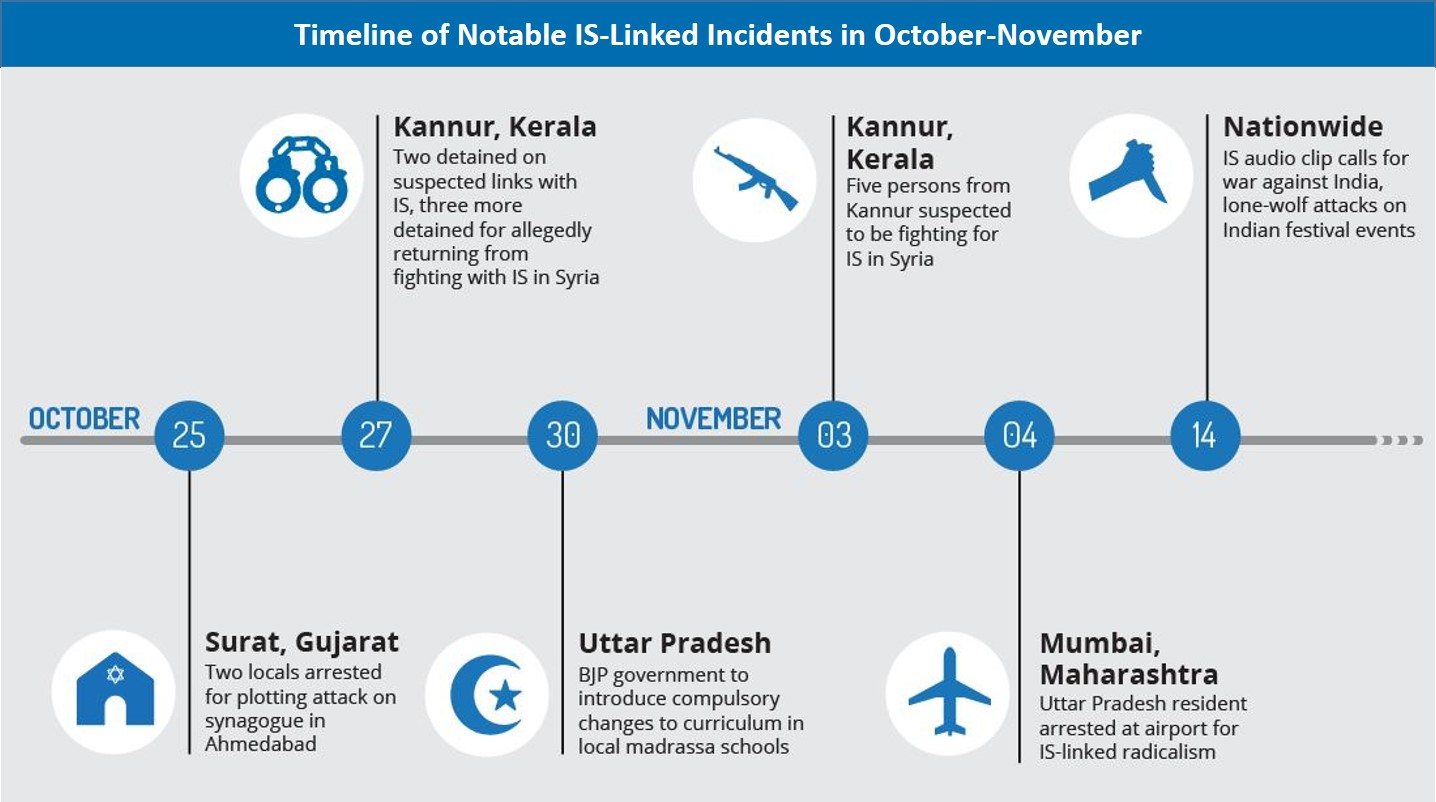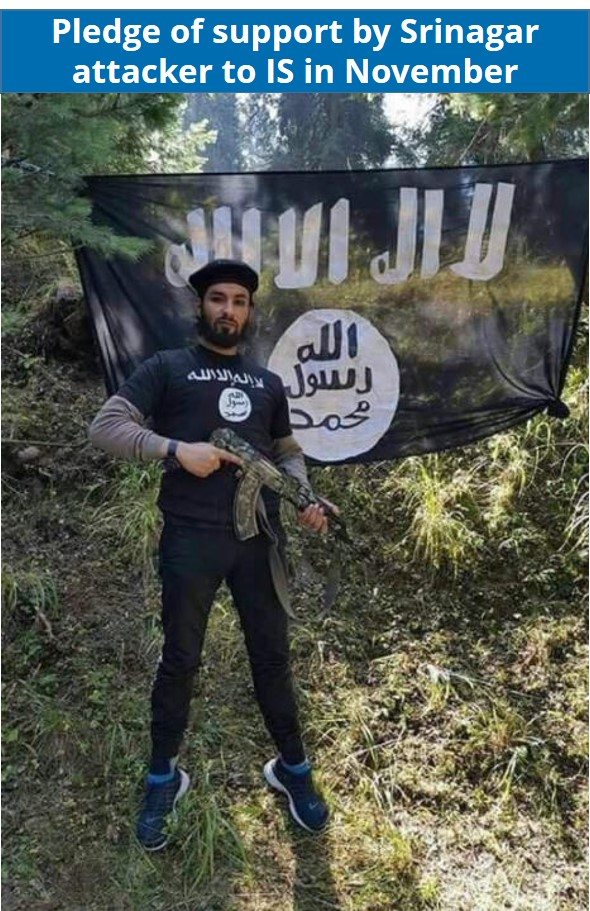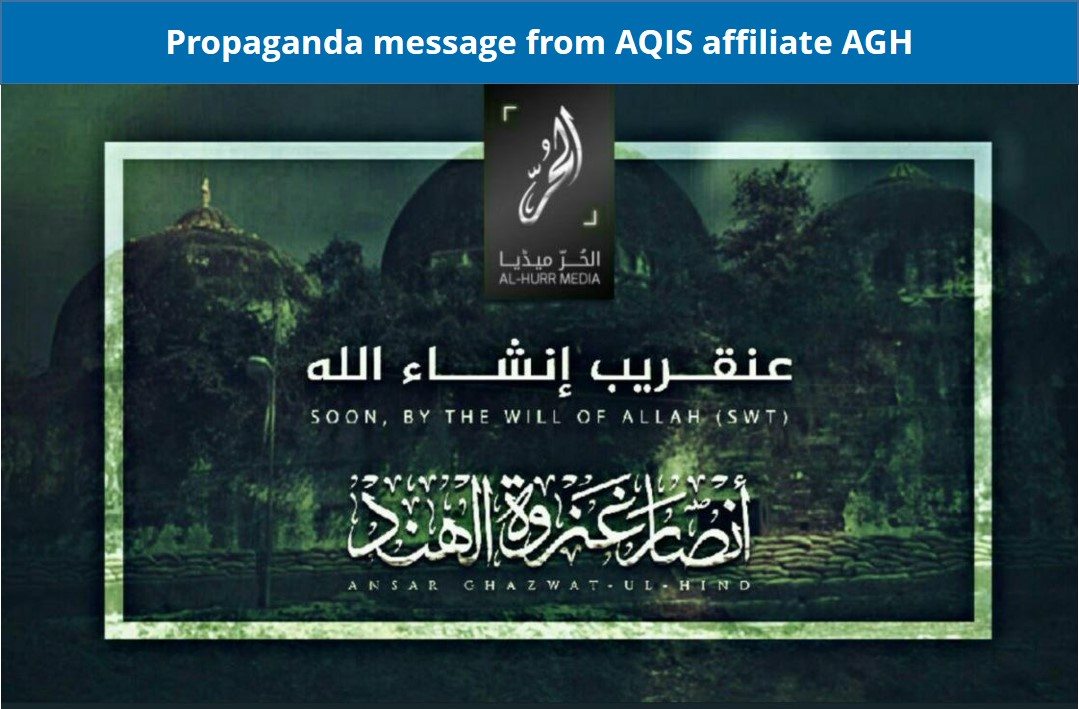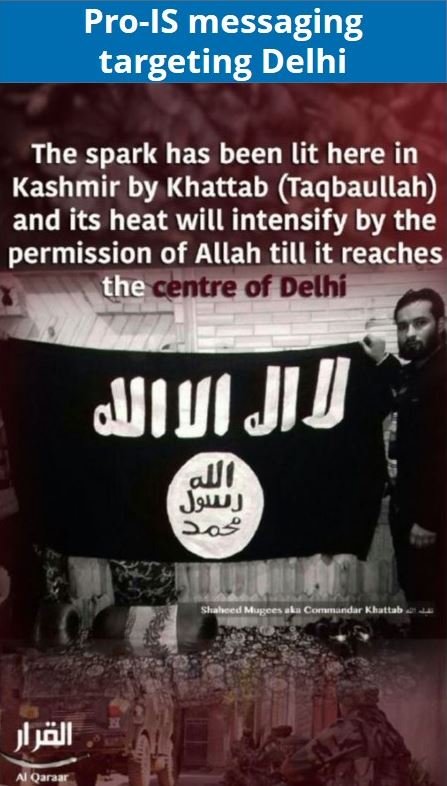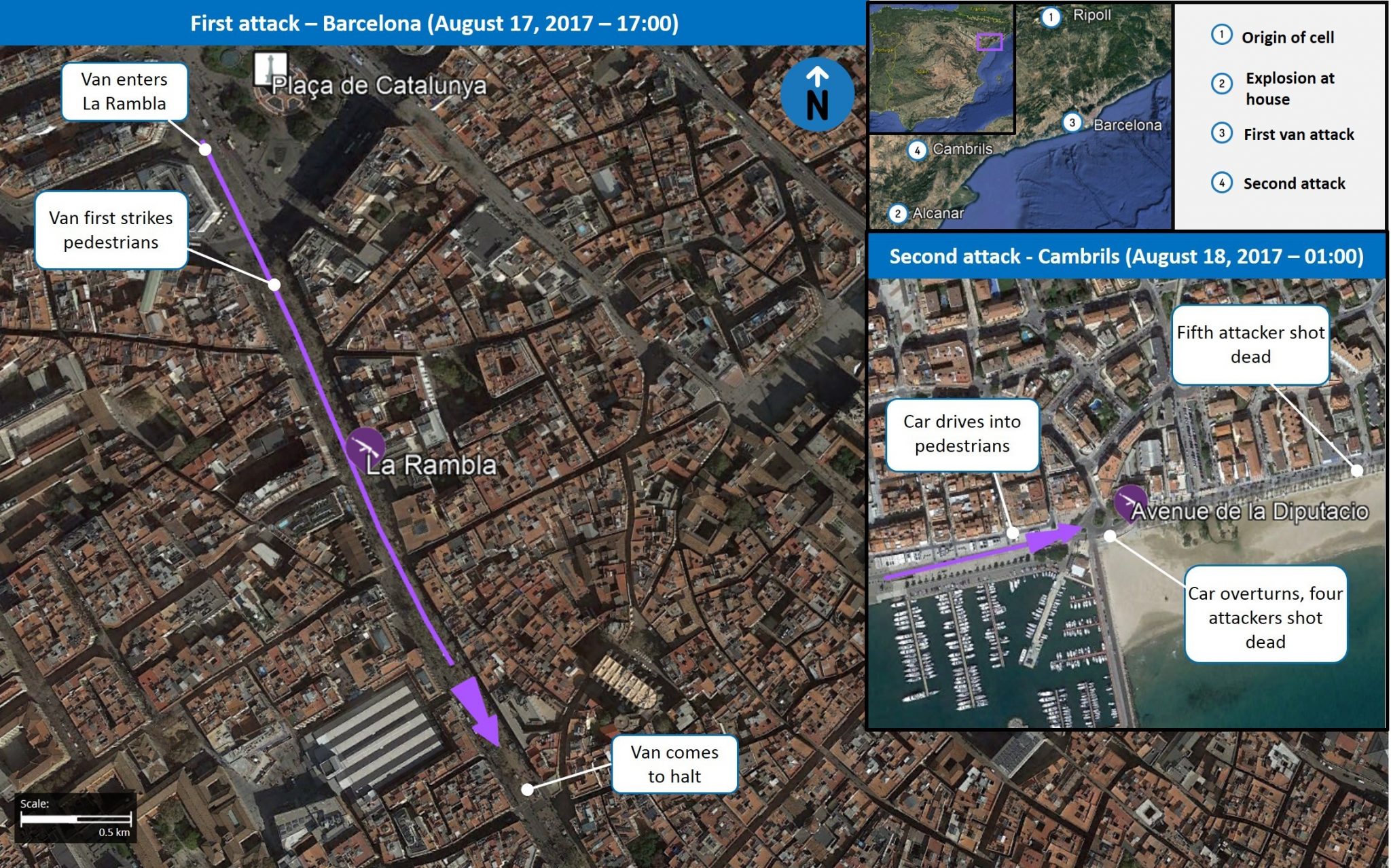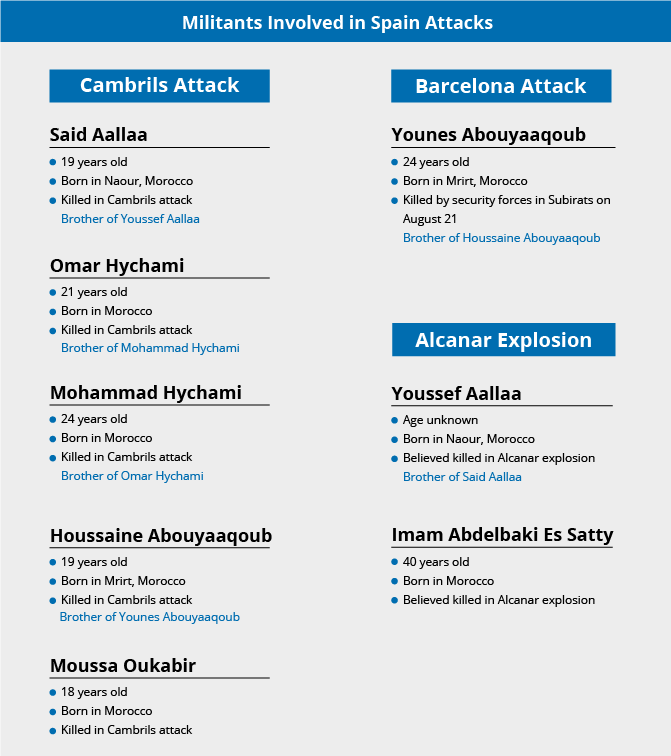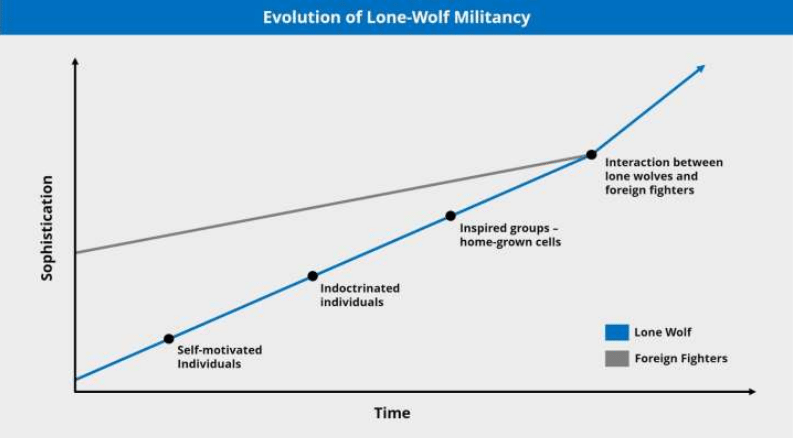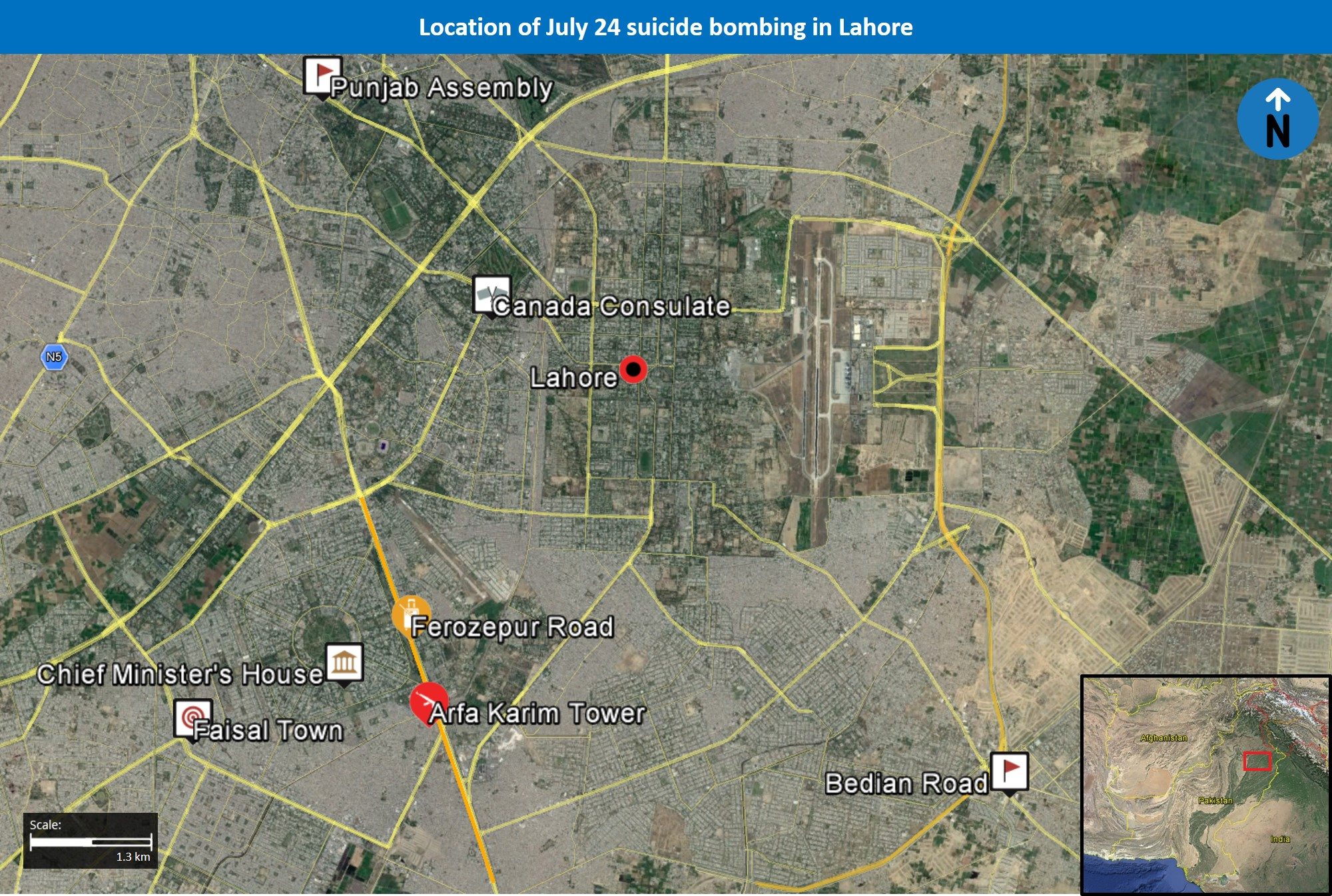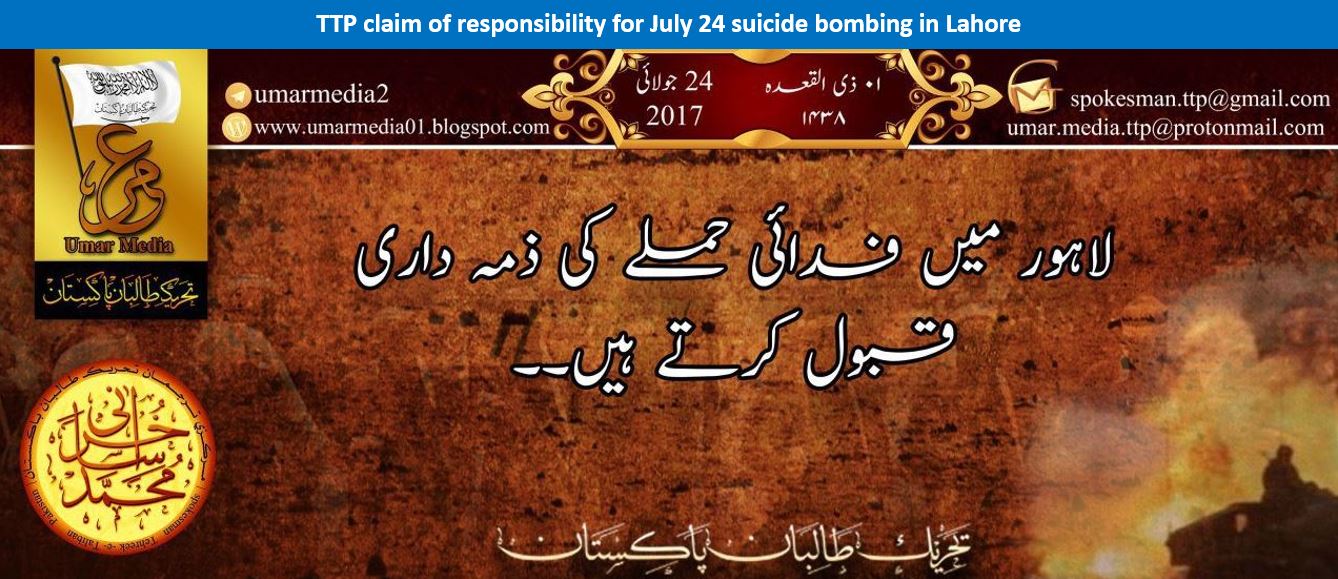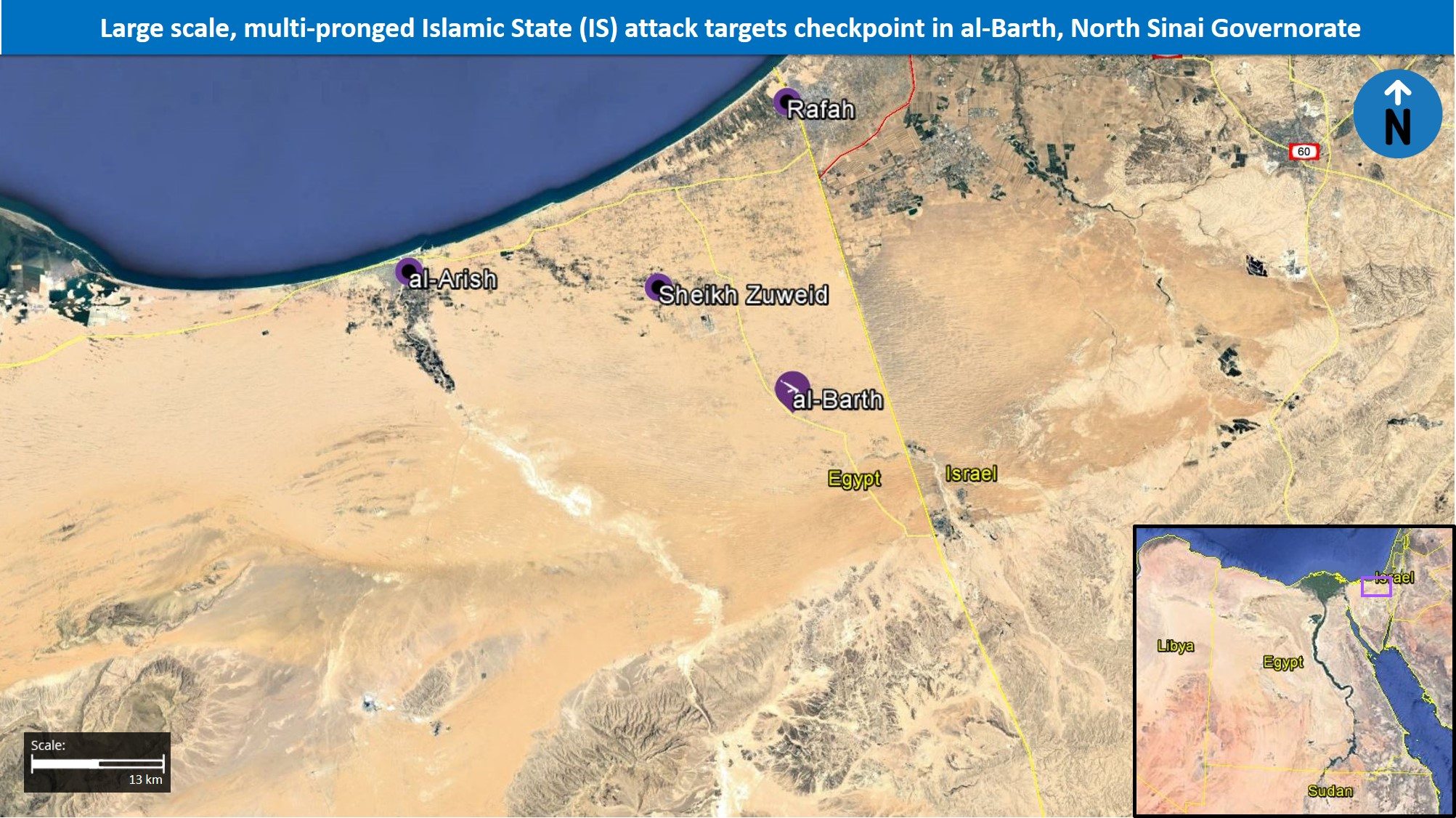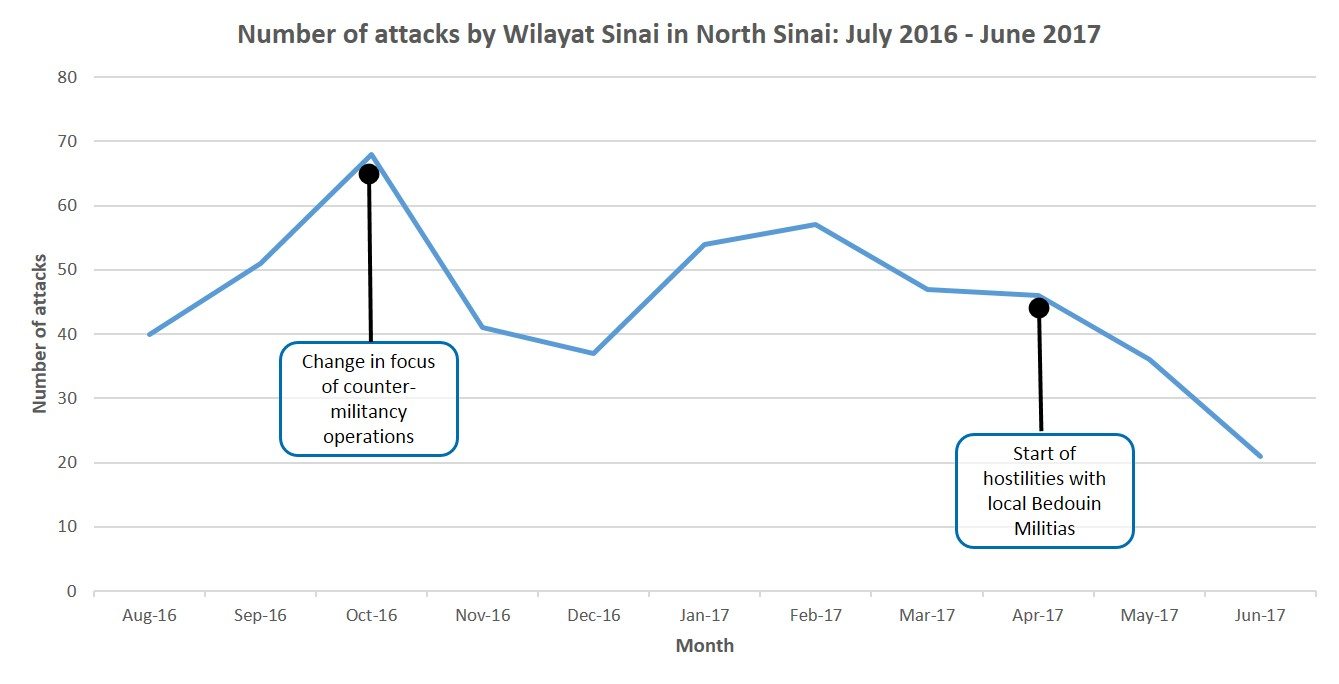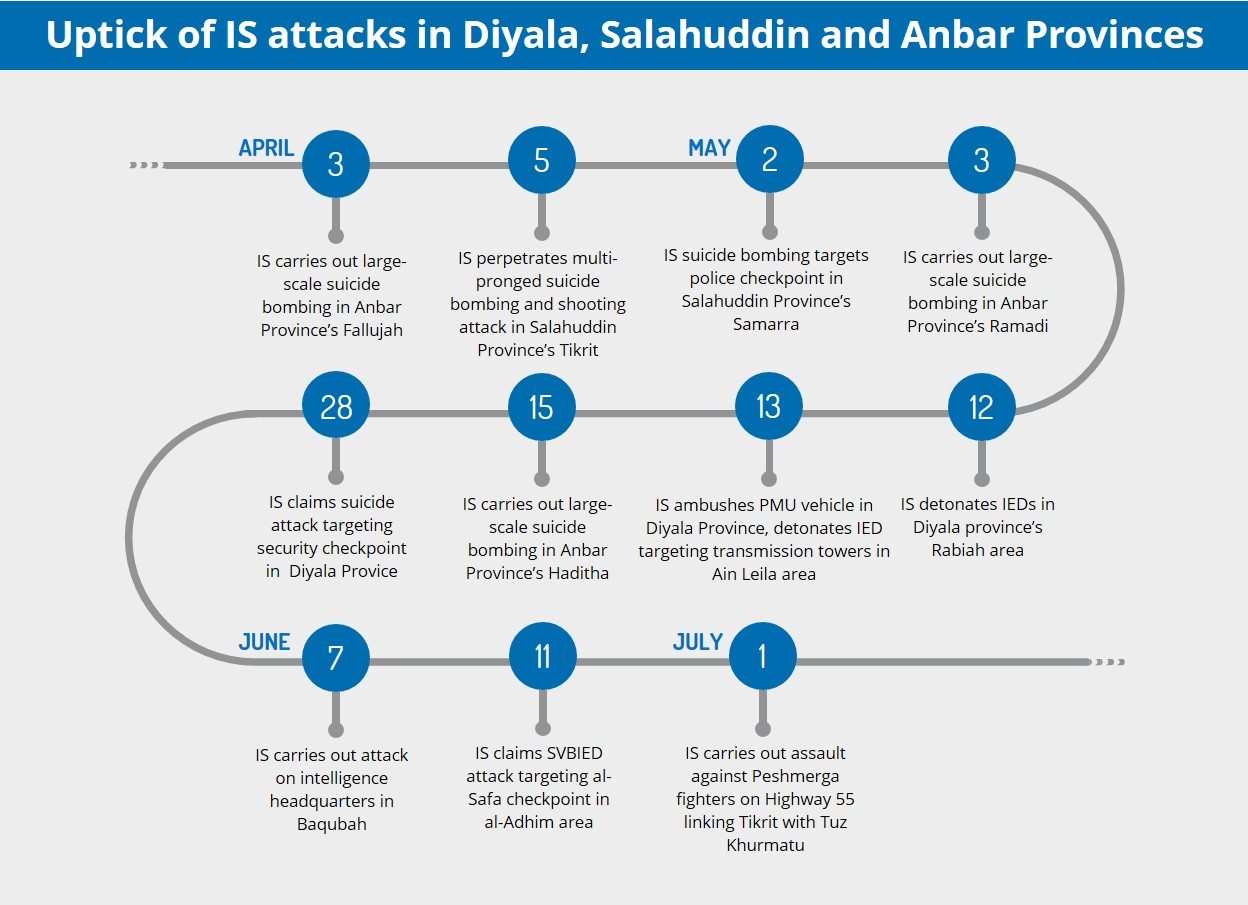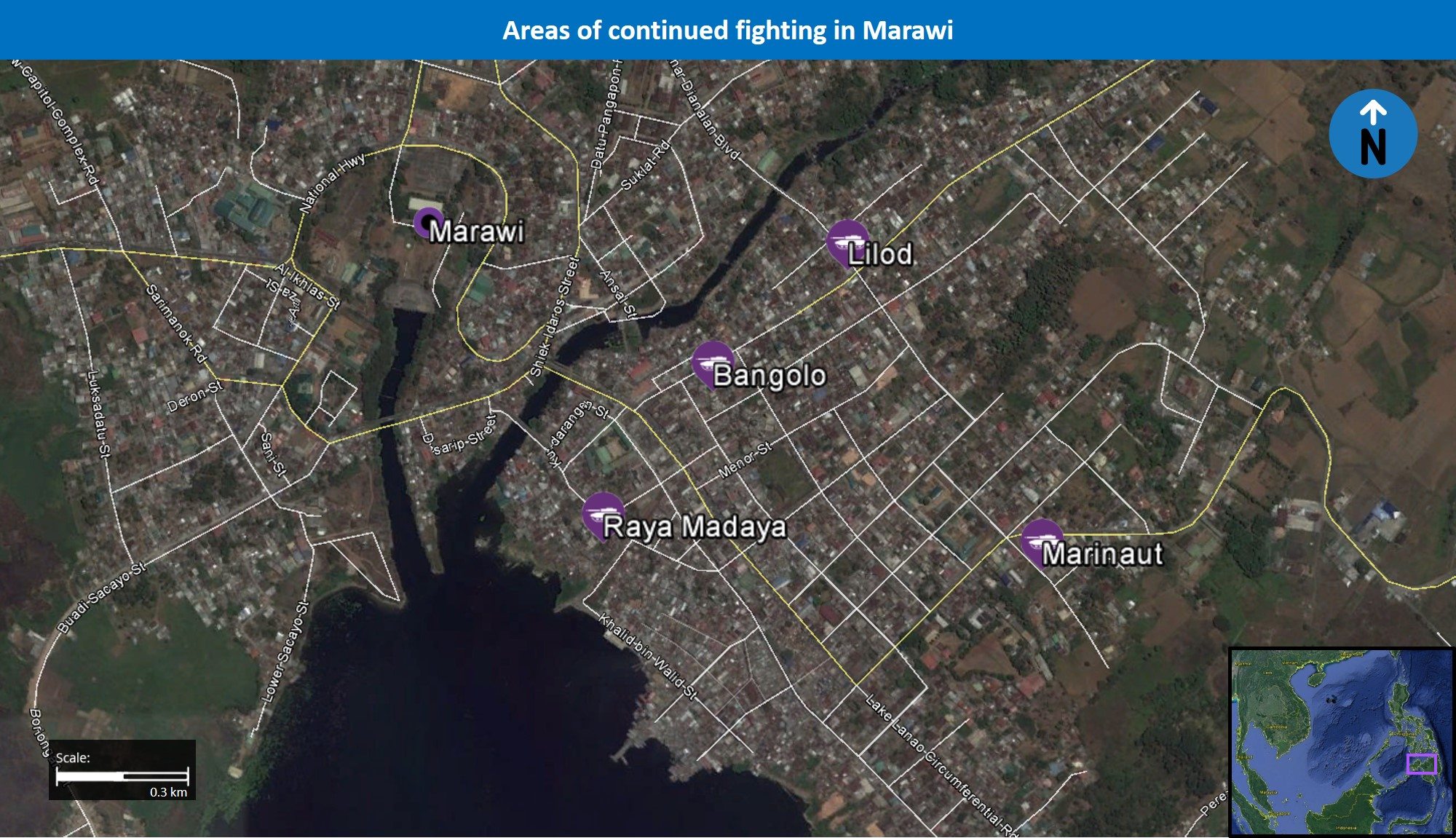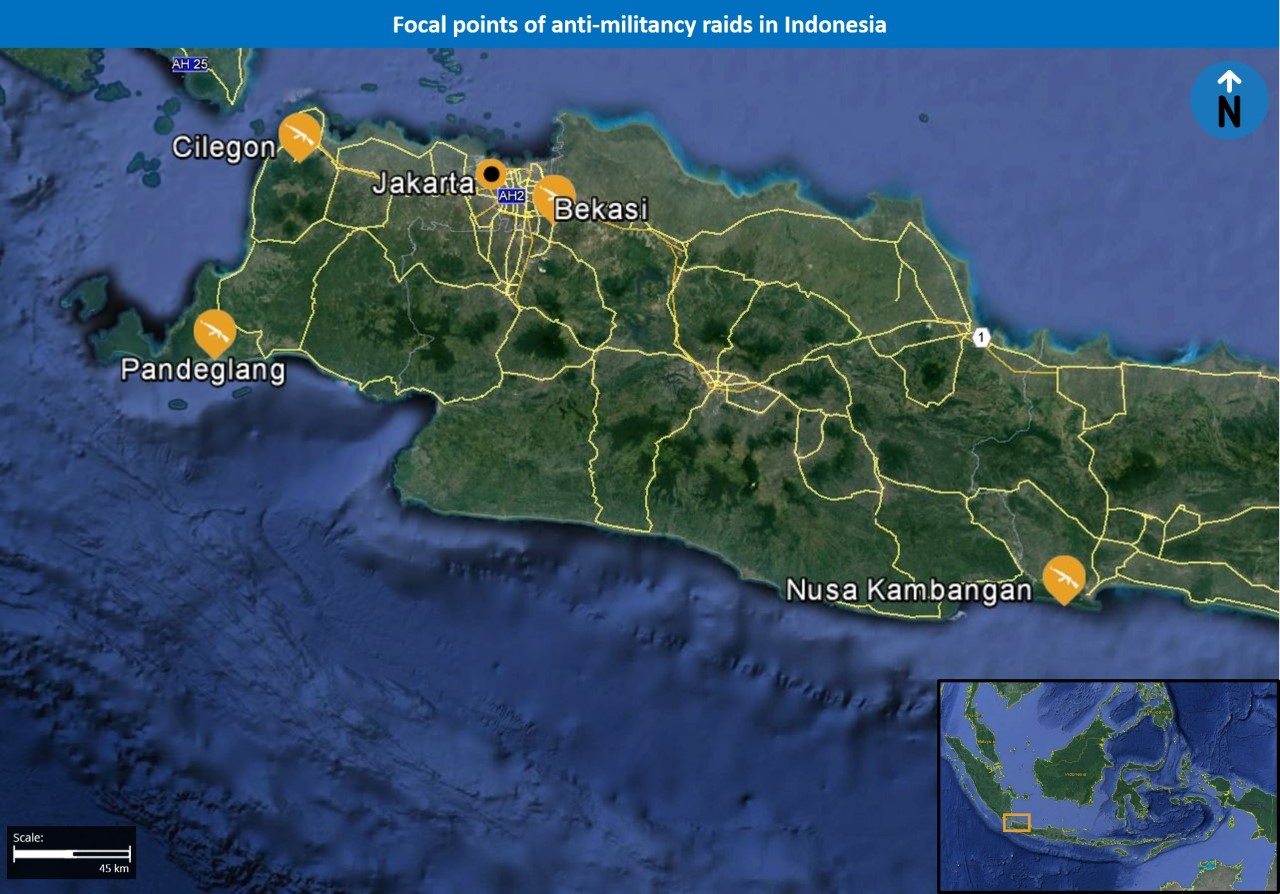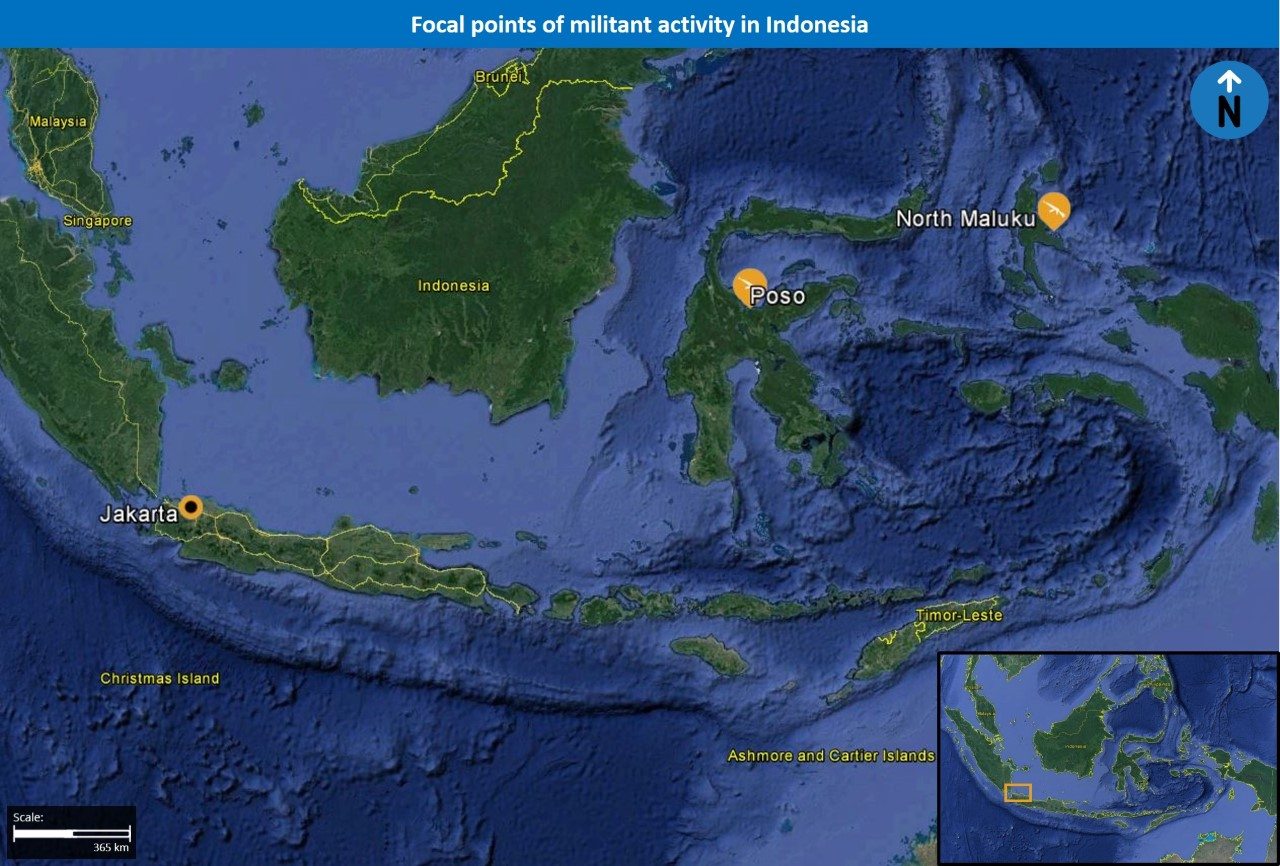Current Situation
Between November 22 and December 13, Islamic State (IS) released a series of online messages calling for attacks in India and indicating that the group was soon to develop a presence in the country. Similarly, al-Qaeda in the Indian Subcontinent (AQIS) released anti-India messages and videos during the period, making references to alleged right-wing Hindu violence perpetrated by the state towards its Muslim population.
The messages follow a claim by IS on November 18 for an attack in Srinagar, Kashmir, where one police officer was killed. On November 14, an audio clip purportedly from an Islamic State (IS) operative from Kerala State was circulated online via social media. Police have reportedly identified the speaker as Rashid Abdullah, the leader of a Kerala-based IS cell who is reportedly now in Afghanistan with Islamic State-Khorasan Province (IS-KP). Abdullah calls for truck, knife, and poison attacks against Hindus at major public religious festivals such as the Kumbh Mela and the Thrissur Pooram.
In recent months, AQI has increased the frequency of its propaganda messages directed towards India. In July, the group additionally received a pledge of support from Ansar Ghazwatul Hind (AGH), a Kashmiri militant group that broke away from the Hizbul Mujahideen (HM).
Motivations
The recent trend of increasing messaging by transnational groups IS and AQIS targeting India appears to be driven by an underlying competition between the groups to expand their spheres of influence in the country. Since its formation in 2014, AQIS has been dormant operationally in India, largely due to the movement of most of the group’s operatives towards the Afghanistan-Pakistan region, where they have embedded themselves with local militant groups fighting those respective governments. This revival of propaganda activity directed towards India was likely triggered by the pledge of the Kashmiri militant offshoot, AGH, to the group in July. Islamist militancy in Kashmir state has traditionally been non-aligned with global jihadist groups, and its primary intention has been the pursuit of a political, separatist agenda instead of an overtly religious motivation. Given this historic trend, AGH’s pledge of allegiance is a notable departure. It would appear the growing friction over leadership struggles within the local militant group HM has likely resulted in factions such as the AGH attempting to set up their own interests. To this end, their pledge to AQIS was likely in order to gain credibility for itself during its formative months specifically through association with a major jihadist organization.
Meanwhile, IS interest in the Kashmir conflict, from which it has previously stayed away, is likely based on the growing online interest in the group’s banner in the state. Youth in Kashmir appear increasingly disaffected with traditional militant groups such as HM. This sentiment likely extends towards groups that operate across the India-Pakistan border as well, such as Lashkar-e-Taiba (LeT) and Jaish-e-Mohammed (JeM), who they maintain are driven by political interests and do not represent the true Islamic character of their movement. Specifically, the reported images of the perpetrator with IS insignia prior to the attack likely resulted in their claim of the November attack in Srinagar. The details of the claim were faulty, stating that a Pakistani and not an Indian officer was killed; this throws into question the degree of contact between the perpetrator and IS leadership prior to the attack. However, it is nevertheless reflective of the group’s interests in reaching out to sympathetic locals and existing militant groups in Kashmir. This interest appears to be growing as IS takes increasing losses in Syria and Iraq, and consequently pivots to newer territories.
Apart from Kashmir, a degree of support for IS also appears to be developing across the country, as witnessed in the recent arrests, primarily in states with notable Hindu-Muslim community tensions. For instance, Kerala and Uttar Pradesh states, where a majority of the arrested suspects were originally from, have witnessed a notable increase in conflicts between Hindu and Muslim communities and political groups. This has especially been the case since the growing presence of the perceived right-wing Bharatiya Janata Party (BJP) in these states and its association with pro-Hindu organizations.
Capabilities
At the present time, we assess that the operational capabilities of both IS and AQIS across India’s major cities and central areas remain low. Despite sympathies for IS, local cells have failed to actualize any major attacks across the country, due to their inability to reduce their exposure to security force investigations. While local cells in recent times have previously attempted to build explosives or plan attacks, they have been unsuccessful due to raids and arrests that have foiled their plots. It is worth noting that these cells located until now have largely been isolated from each other and there is no evidence of a coordinated leadership hierarchy to guide recruitment and plot development. These solitary efforts are a likely cause for the inconsistencies in the abilities of these cells, and the overall lack of actionable capabilities. In addition, more established local militant groups such as the Indian Mujahideen, which may have been able to assist these efforts, have largely been neutralized in recent years through targeted operations and the arrests of their leaders. That said, the latent potential for less-sophisticated lone-wolf attacks remain, given the low operational threshold required to plan and carry out these attacks.
In Kashmir however, capabilities for transnational jihadist groups remain more potent. This is due to the established presence of militant groups, and the consequent access to weapons and explosives. To this end, AQIS appears to have an advantage over IS, given its established relationship with an on-ground proxy AGH, which is known to have trained operatives capable of staging ambushes on security force convoys and military camps. IS, on the other hand, has only been loosely linked to the November attack, and their connection to local militant groups remains underdeveloped at the present time.
Probabilities
In the immediate term, we assess that both IS and AQIS are likely to continue their push to increase spheres of influence in India. Their primary focus is likely to be Kashmir, given the marked escalation of civil unrest since 2016 over the continued military presence and the opportunities this presents for recruitment. Meanwhile, both groups will likely seek to capitalize on the increasing factionalism within established local militant groups such as HM and draw disaffected factions towards their banner. AQIS is likely to attempt this through their local affiliate AGH, whose leader Zakir Musa remains popular among locals in southern Kashmir. Meanwhile, IS interests are likely to be coordinated by their affiliate in the Afghanistan-Pakistan region, IS Khorasan Province (ISKP). The group may seek to replicate their model of engagement in Pakistan, which has involved carrying out attacks through local low-level militant groups and claiming them as IS attacks, without any formal pledges of allegiance from their proxies.
For the rest of the country, both groups’ prospects will likely remain lower in the immediate term, given that the Indian military has largely sequestered the Kashmir conflict away from the country’s center. However, recent messages have called for Kashmiri militants to attack Delhi, indicating strong intent to expand beyond the state. Such attempts, while rare, are not unprecedented and security forces will likely remain vigilant for this threat.
Instead, in the country’s major cities and central regions, the more immediate threat stems from potential lone-wolf militancy. There remains a palpable intent among certain radicalized sections of the Muslim community, and sympathizers may increasingly take inspiration from IS’s recent calls for lone wolf attacks in places like Europe and North America. In addition, local cells may also increasingly orient their operations towards these forms of attacks should more sophisticated modus operandi continue to yield limited results. This would likely place Hindu religious targets, such as festivals and temples at a specific risk. Attacks against other targets such as synagogues and Western diplomatic or business interests also remain a possibility, given that local radicalized individuals are equally engaged with global jihadist propaganda, which advocates attacking these targets.
Recommendations
Travel to Delhi and other major Indian cities can continue, while travelers are advised to maintain vigilance for security risks associated with frequent, large demonstrations as well as potential militant threats targeting government buildings, security installations, large crowded public places, or religious sites.
We advise against all travel to Jammu and Kashmir State, with the exception of Jammu and Srinagar cities. Any overland travel west or south of Srinagar, towards areas such as Tral, Baramulla, Sopore, Shopian, and Anantnag is advised against.
Given the continued militant threat in India, maintain heightened vigilance for suspicious individuals and unattended baggage, particularly in public places including major hotels, government installations, transport hubs, markets, restaurants, entertainment venues, and places of worship.


